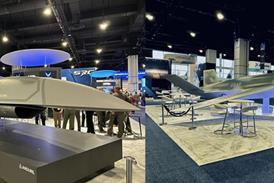By David Learmount in London
The US Federal Aviation Administration is pressing ahead with its civil court case against British Airways for operating an aircraft in an “unairworthy condition”, despite UK investigators concluding a captain’s decision to fly a Boeing 747 across the Atlantic with only three serviceable engines did not put passengers at risk.
The court case relating to the 19 February 2005 incident involving a 747-400 being operated from Los Angeles to London is expected to be heard in New York by an administrative law judge on 14 August. An engine was shut down just after take-off, but the crew elected to continue to the UK, eventually diverting to Manchester, believing they were running low on fuel.
The charge sheetThe FAA charges that BA “operated the... aircraft with only three operating engines, bypassing numerous suitable alternative airfields in the USA and Canada before proceeding across the North Atlantic Ocean. By reason of the above, BA operated an aircraft in the USA in an unairworthy condition.” The FAA’s rules state: “If not more than one engine of an airplane that has three or more engines [fails or is shut down] the pilot in command may proceed to an airport he selects if, after considering the following, he decides that proceeding to that airport is as safe as landing at the nearest suitable airport.” The list of considerations includes the nature of the malfunction, altitude, weight, usable fuel, weather conditions in the air and at potential diversions, air traffic congestion, terrain and the crew’s familiarity with the airport to be used. |
|---|
The UK Air Accidents Investigation Branch’s (AAIB) main recommendation is that “the [UK] Civil Aviation Authority and the Federal Aviation Administration...should review the policy on flight continuation for public transport operations following an in-flight shutdown of an engine, to provide clear guidance to the operators”.
The US court hearing – originally set for May – was delayed following a BA request to await the official report. The AAIB says that “no evidence was found to show that flight continuation posed a significant increase in risk, and the investigation established that the aircraft landed with more than the minimum required fuel reserves”.
Problems with the No 2 engine began immediately after take-off, says the report, and the crew diagnosed an engine surge. The crew correctly carried out the shutdown procedure and asked air traffic control for radar vectors to hold in the area while they carried out an assessment of the situation, including making a radio call to the London engineering department, says the report.
Base engineers advised that continuing to destination was an option, but that the decision rested with the captain. The report says that to return for a landing at Los Angeles airport would have required dumping 70t fuel, so the commander decided to continue the flight-planned route while assessing aircraft performance. He elected to continue to London, but eventually landed at Manchester, thinking some of the fuel on board was unusable. This judgment was incorrect, the report states, and one of its recommendations is that BA should include fuel management in the three-engine case in its type and recurrent training.
BA says the question of whether the crew should have pressed on is “a policy matter for regulators to resolve” and that the flight “was operated in accordance with applicable safety regulations”.
Source: Flight International























